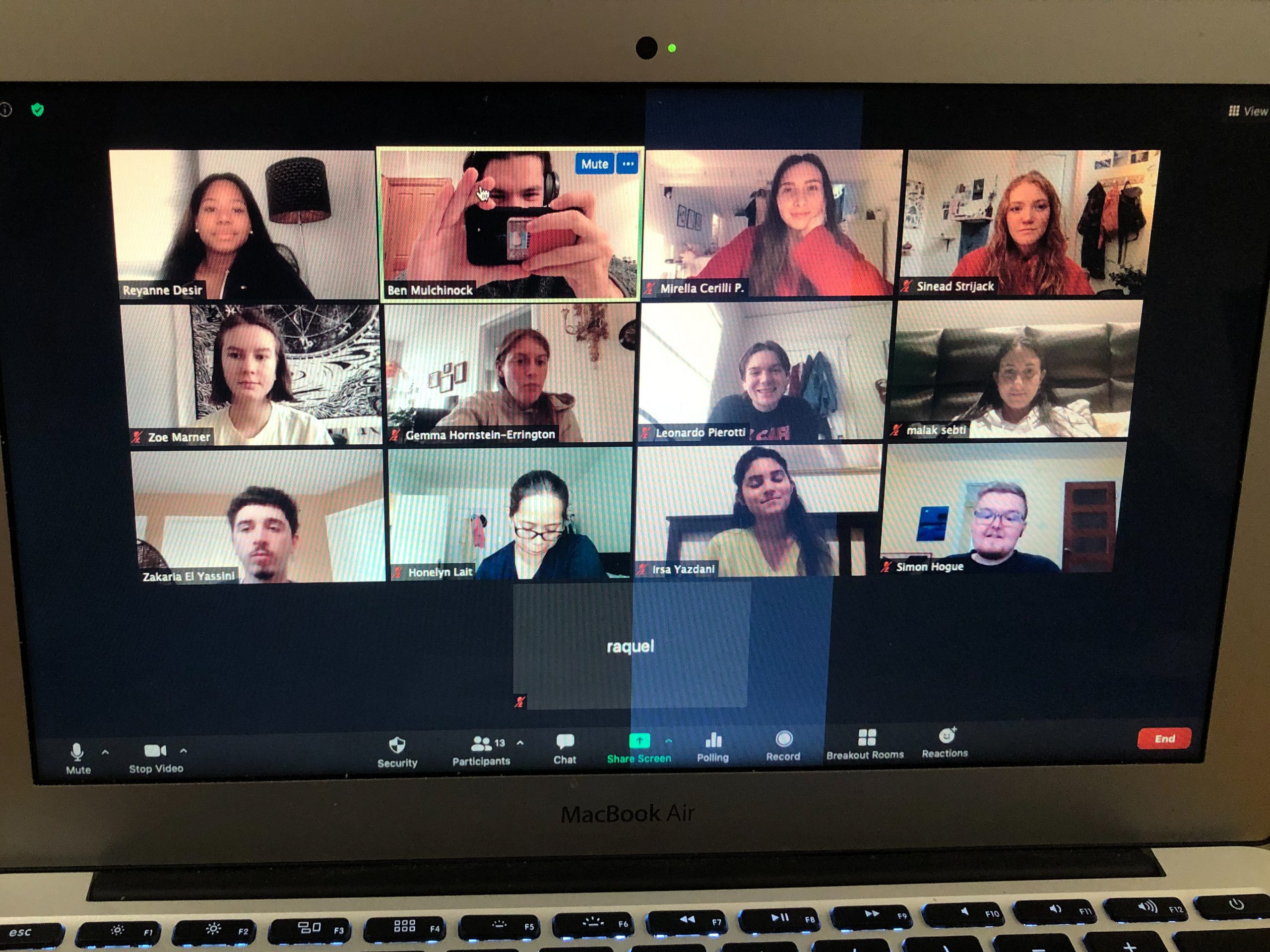For centuries, body piercing has been practiced. The ancient Israelites
wore nose rings while Egyptian pharaohs pierced their navels as a rite
of passage. Whereas Roman soldiers pierced their nipples to exhibit
their manhood, Mayans had their tongues pierced as a spiritual ritual.
Whether for cultural/religious purposes, creative expression, or the
desire to try something different, body piercing is a growing art. It is
not surprising then that body piercing has become a popular trend today
among teenagers and young adults. However, being aware of the risks
involved before engaging in body piercing is extremely important.
According to Ben, a 24-year-old body piercer who has been working at
Tatooatouage in Montreal for over a year and who has over three years of body piercing experience, the most popular places to pierce are the
navel, eyebrow, and tongue with the lip area getting more popular.
Mostly 16 to 25-year-olds frequent Tatooatouage. Ben, whose specialty is genital piercing, says piercing those unmentionable places is more
popular among older people who have been considering it for a while. The reason for piercing below the belt is often done to enhance sexual
experience.
In addition, he has also pierced people’s backs up along the spine with
barbells, which must be modified or else the body tends to reject them,
up the arms, the throat, neck and rib areas. “If it’s done properly, the
risks are very minimal,” says Ben.
As for himself, Ben has a pierced nose septum (the upper part of the
nose), tongue and throat piercings, ears stretched three-fourths, two
pierced nipples, and two genital piercings. He once had his ribs
pierced, but his body rejected it. “It’s the individuality factor,” he
says. “Body piercing is the primal urge to modify your flesh because
your body is the only thing you can control.”
Nonprofessional piercers may use unsanitary techniques, and if a hole is
made in the wrong place excessive bleeding may occur. Permanent damage can be caused when a nerve is hit. The threat of infection also poses a serious risk. Lethal diseases such as Hepatitis B, HIV, AIDS, tetanus and tuberculosis can be transmitted through non-sterile equipment.
Surgical-grade stainless steel or solid 14-karat yellow gold, titanium,
and niobium are the recommended jewelry to wear to avoid allergic and
infectious responses.
A newsletter from the American Academy of Facial, Plastic and
Reconstructive Surgery says: “Multiple earring holes placed around the
top of the ear are a particular cause of concern-serious infections can
cause the loss of the entire top curve of the ear. Nose studs also are
risky- an infection in this area may involve nearby blood vessels and
spread to the brain.” In addition, nose piercings are associated with
keloid formation, an abnormal growth of scar tissue after a wound.
Blacks and those with Asian ancestry are the most at risk.
Oral piercing is also popular. Recently, the American Dental Association
deemed oral piercing a public health hazard. Risks of mouth piercings
include choking after swallowing jewelry, numbness and loss of taste in
the tongue, chipped or fractured teeth, prolonged bleeding, uncontrolled
drooling, gum injury, and difficulties in breathing, chewing, and
swallowing. Kissing is also risky during the healing process. The loss
of one’s ability to speak is probably the most incredulous risk.
Julie Santaguida, a 20-year-old Social Science student at Vanier
College, remembers her negative oral piercing experience. “My body
rejected the tongue ring I got,” she admits. “My tongue wouldn’t stop
swelling.” Despite her negative tongue experience, Julie decided to get
an eyebrow pierced. Her desire to pierce was inevitable. “If I didn’t
have the eyebrow ring, I’d have gotten a lip ring. But I didn’t want to
overdo it because I work, and too many piercings might pose a problem
with employers.”
Besides the work factor, Owen Moran, the Health Educator at Concordia’s
Health Services, believes people should consider their future time
perspective before going through with body piercing. “What will this
piercing mean in 15 or 20 years?” he points out. “Think how it will fit
into your life right now and how it will fit into your future plans.”
Whereas people do not often think of the time factor, many people do
pierce cautiously. “I got an eyebrow ring because I was too chicken of
the side effects of a tongue piercing, and I needed something
different,” recalls Annie Havis, 22, a former Concordia student. “One is
just enough to be deviant!”
When it comes to facial piercing, facial paralysis can occur if a
piercer who is piercing an eyebrow goes too far towards the nose and
cuts a nerve. Other hazards include ugly scarring and allergic
reactions. Navel piercings can be easily irritated since they are
constantly rubbed by clothing, and healing can take up to nine months.
Similarly, nipple piercings on the breasts can easily tear. A young girl
with scar tissue on her breast can have blocked milk ducts. Lack of
treatment may result in difficulty or even impossibility to nurse a
baby.
Even though genital piercings don’t tend to become terribly infected,
practitioners say that they can increase the risk of transmitting
sexually transmitted diseases while they are healing. People with
genital piercings are recommended to use condoms or dental dams when
having sex until their piercing is healed.
Besides the possibility of a Hepatitis B or HIV transmission, Moran
insists that the number one risk a person must be aware of is infection.
“It can spread if it’s not caught and treated.”
Healing times vary among individuals. For diabetics, healing takes
longer. Hemophiliacs could experience severe or even life-threatening
bleeding. It could take one to four months for the piercing to stop
oozing if a woman has her clitoris or labia pierced. Males with pierced
scrotums or penises could go between a one and eight month healing
process. Urinal streams can also be diverted thus forcing some men to
sit on the toilet in order to contain the spray.
However, in spite of the risks, people are not slowing down their body
piercing. Gauntlet, an International chain of body-piercing shops in
California, New York and Paris, reports at least 30,000 piercings each
year.
Ultimately, deciding whether or not to pierce one’s body is a personal
decision.
People like Sebastien Lacasse believe that body piercing is worth the
risk. “Yes, it is,” declares the 25-year-old, who has over a year of
body piercing experience and has been working at Tattoo Time in Montreal for over a year. “It’s a very personal experience and one of my most sensitive zones.” Along with his ear stretch, he has a nipple ring.
The bottom line is that in order to reduce your risk of virus or disease
transmission or infection, going to the professionals is extremely wise.
Doing a bit of research before taking the plunge never hurts. To pierce
or not to pierce? Only you can answer that question.
Master your Photo Skills with the Concordian
Photography is as easy as one, two, three! Are you ready to switch out the average camera on…



